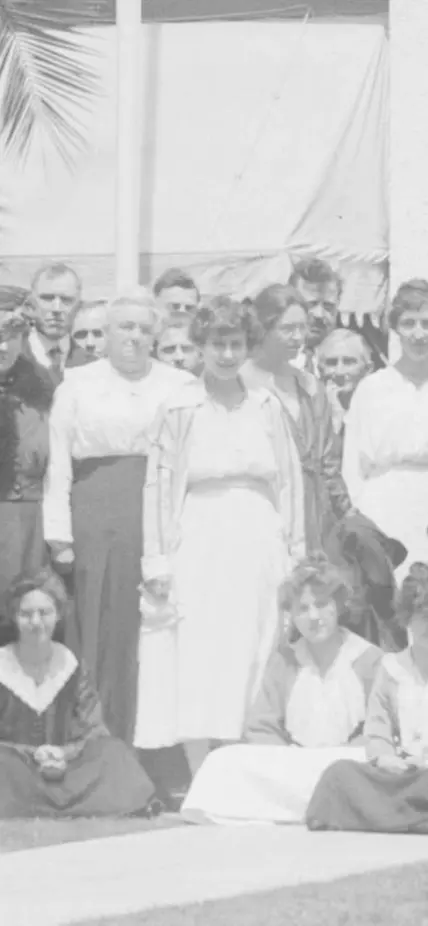Nettie Stevens Biography


In 1903, Carnegie Science was just one year old, and its funding procedures were still in the formative phase. But future Nobel Prize winner Thomas Hunt Morgan knew an opportunity for success when he saw one and championed a grant application to the institution by a newly-minted Ph.D. student named Nettie Maria Stevens.
The very next year, Carnegie Science awarded Stevens $1,000 for postdoctoral research support. The grant was renewed in 1905–the same year in which Stevens produced part one of a remarkable paper, published by Carnegie, which offered definitive evidence demonstrating that the X and Y chromosomes were associated with sex determination.
The report was revolutionary. Prior to Stevens’s work, many scientists speculated that gender was determined by environmental factors such as food and temperature. Stevens’s research helped change that view and shift society. Her work is also cited as the first demonstration of an inherited trait associated with a chromosome. Although the discovery was made simultaneously by Edmund Beecher Wilson at Columbia University, Stevens’s contributions are indisputable.

Nettie Marie Stevens is shown here looking through a microscope while studying at the Stazione Zoologica in Naples, Italy, in 1909. In 1904, soon after getting her Ph.D. in biology, Stevens was awarded a grant from Carnegie Science. Her 1905 paper “Studies in Spermatogenesis with Especial Reference to the Accessory Chromosome” produced some of the first work offering cytological evidence demonstrating that the X and Y chromosomes were associated with sex determination. Image Courtesy Bryn Mawr College Special Collections.
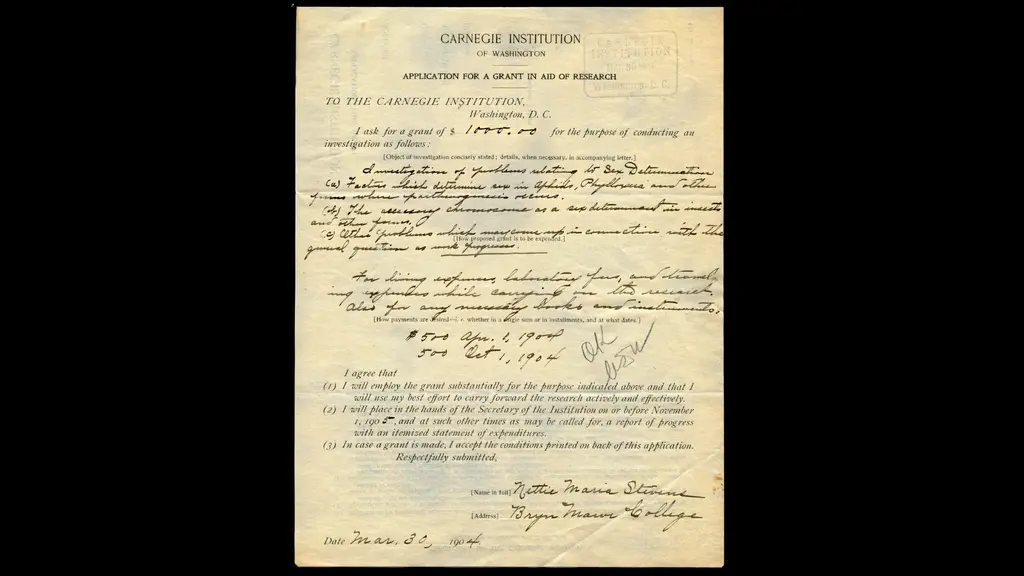
Nettie Stevens 1904 grant application for "Investigation of problems relating to Sex Determination." From the Carnegie Science Archives.
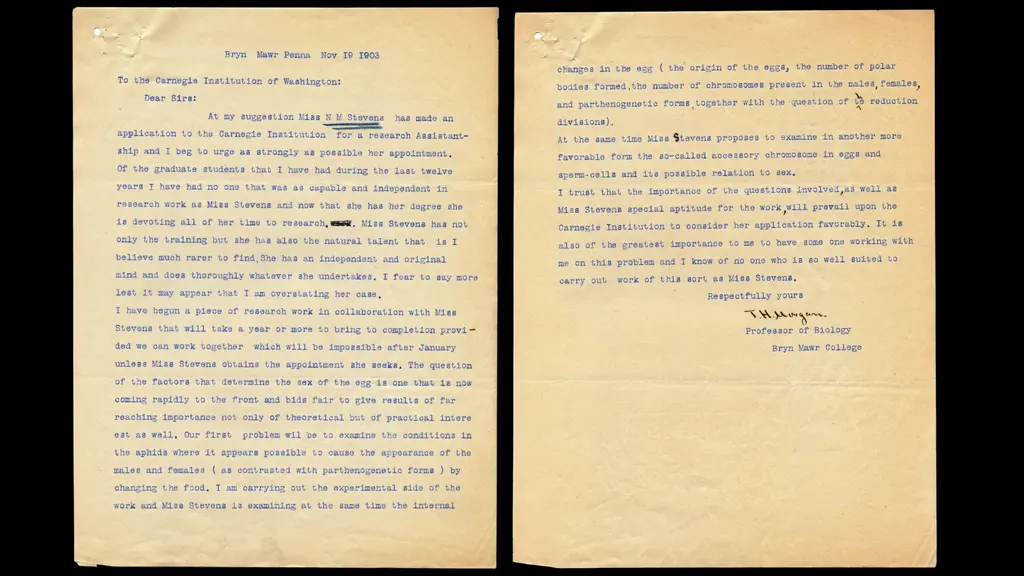
Nettie Steven's recommendation letter from T.H. Morgan, a professor of Biology at Bryn Mawr College. From the Carnegie Science Archives.

Plate XII, depicting chromosomes in Coleoptera (beetles), note "x" the "odd chromosome" on figure 174. From Stevens’ Studies in Spermatogeneiss, 1905-1906, published by Carnegie Science.

Portrait of Nettie Stevens circa 1904. From the Carnegie Science Archives.
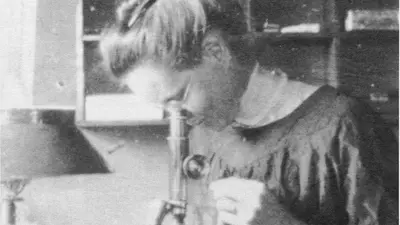
Nettie Stevens at the Microscope
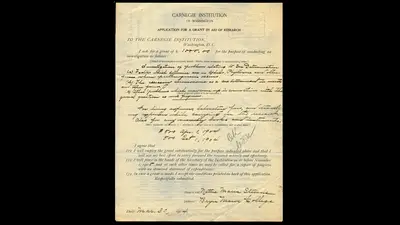
Grant Application
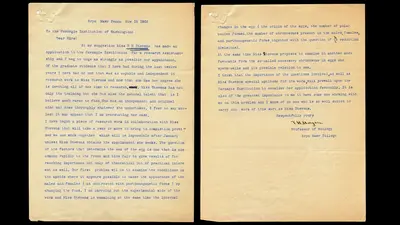
Recommendation Letter
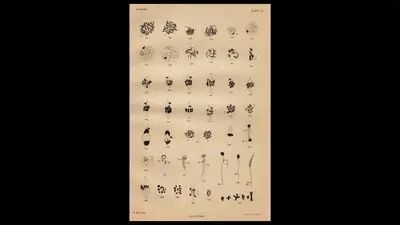
Chromosome Plate
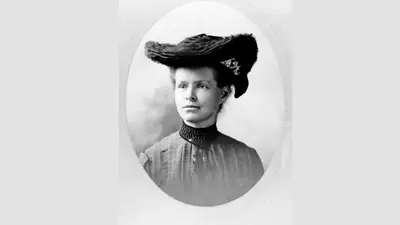
Portrait of Nettie Stevens
It’s easy to imagine what Carnegie grant #177 meant to Stevens in 1904 and 1905. It has been said that “financial worries preoccupied her,” and surely Carnegie money helped assuage some of those concerns. Carnegie support must also have validated her work as a scientist during a time when research opportunities for women were limited.
Steven’s path to these research breakthroughs was atypical. Born in Vermont in 1861, she attended Westfield Normal School in Massachusetts, after which she taught for a while. But Stevens longed to pursue further education. At 35, she traveled across the country and enrolled as an undergraduate at Stanford University, where she would earn a bachelor’s degree in 1899 and a master’s in biology in 1900.
She went on to study biology at Bryn Mawr College, receiving her Ph.D. in cytology in 1903 at age 42. Stevens conducted research and taught at Bryn Mawr and Cold Spring Harbor until she died of breast cancer in 1912, just nine years after completing her doctorate. During her short but significant career, Stevens published a remarkable 40 papers on such topics as chromosomes, regeneration, and taxonomy.
